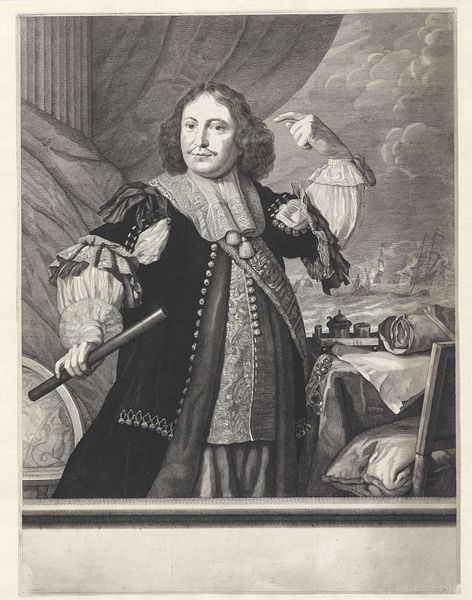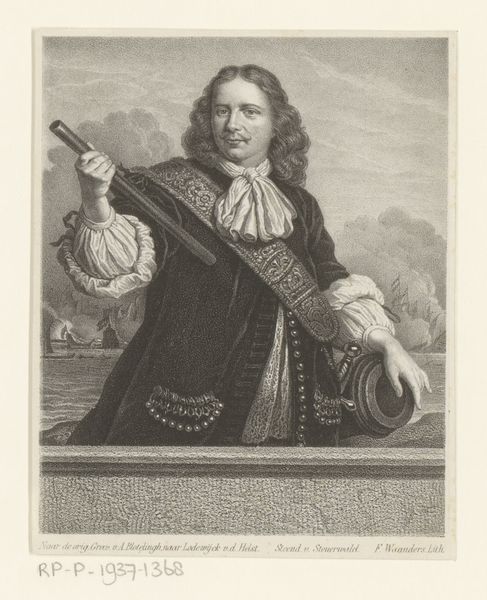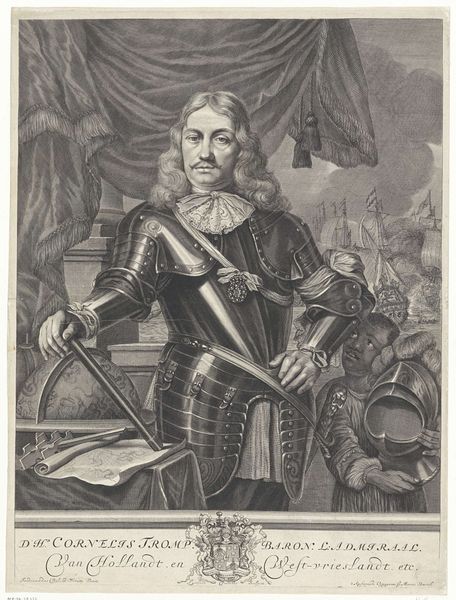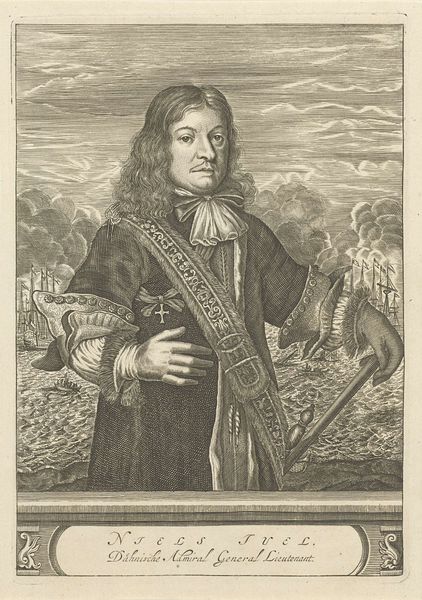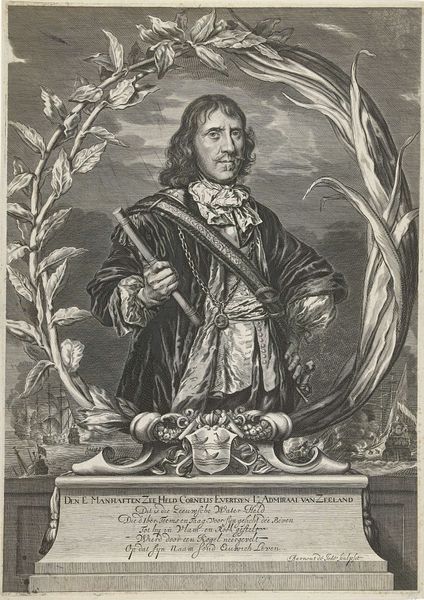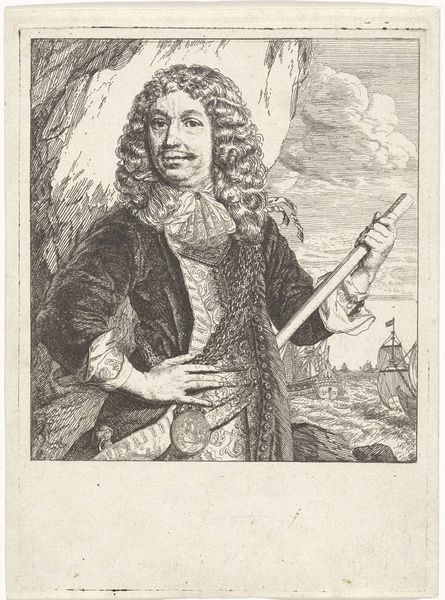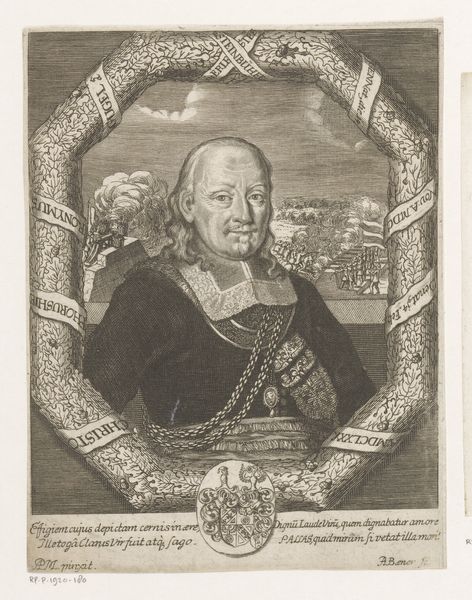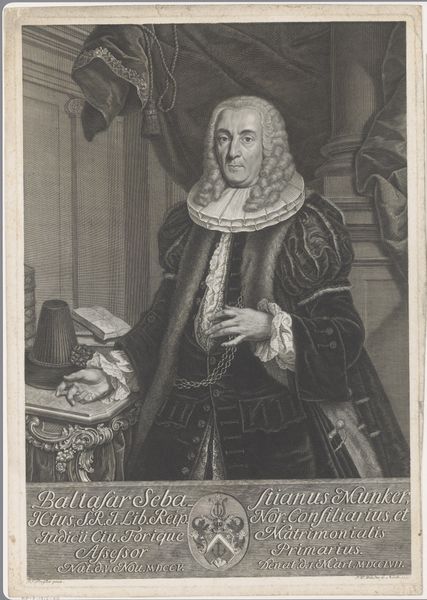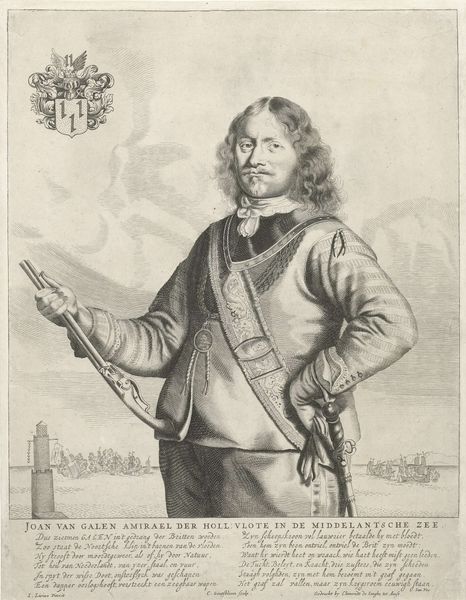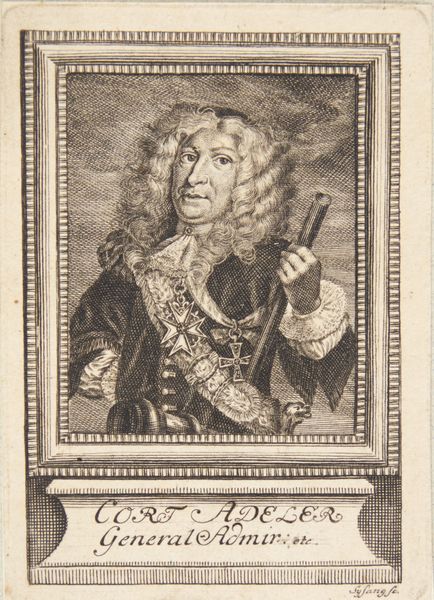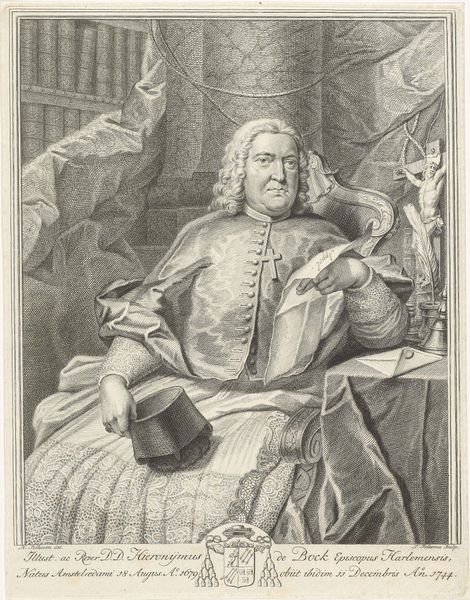
engraving
#
portrait
#
baroque
#
dutch-golden-age
#
figuration
#
history-painting
#
engraving
Dimensions: height 567 mm, width 428 mm
Copyright: Rijks Museum: Open Domain
Editor: This engraving, "Portret van Johan de Liefde" by Lambert Visscher, dating sometime between 1668 and 1690, presents an intriguing figure amid symbols of power and perhaps conflict. What’s striking is the contrast between the subject’s calm demeanor and the turbulent naval battle raging in the background. What do you make of the combination of portraiture and historical scene? Curator: An excellent observation. Consider what a portrait does: it freezes a person in time, distilling their essence into a single, enduring image. And what does a naval battle evoke? Chaos, movement, the unpredictable currents of history. The combination suggests a tension – a need to anchor individual identity against a backdrop of constant upheaval. Notice the objects surrounding him—a globe, a telescope, documents: are these simply props, or are they intrinsic elements defining his identity? Editor: That's interesting. I hadn’t thought of the objects as defining him. Perhaps they signify his mastery of the world, his ability to observe and document, set against the uncontrollable forces of war. Is there a psychological dimension to that, a desire for control amidst chaos? Curator: Precisely. Look at how Visscher uses the light and shadow. De Liefde’s face is brightly illuminated, drawing our attention, yet the background is ablaze with conflict. Does this contrast serve to amplify his perceived authority, a beacon amidst the storm, or might it also highlight a certain detachment, a distance between the individual and the unfolding historical drama? What do you make of his gaze, directed outward, almost confronting the viewer? Editor: It's a very self-assured gaze. Considering your point, perhaps the inclusion of the battle isn't purely for historical context but to showcase the subject’s unwavering resolve despite external pressures. It makes you wonder, what other layers are hidden beneath this carefully crafted image? Curator: Indeed. It’s in these tensions and layered meanings that images truly speak across centuries, prompting us to constantly reinterpret cultural memory. A portrait is never simply a likeness; it’s a carefully constructed narrative.
Comments
No comments
Be the first to comment and join the conversation on the ultimate creative platform.
